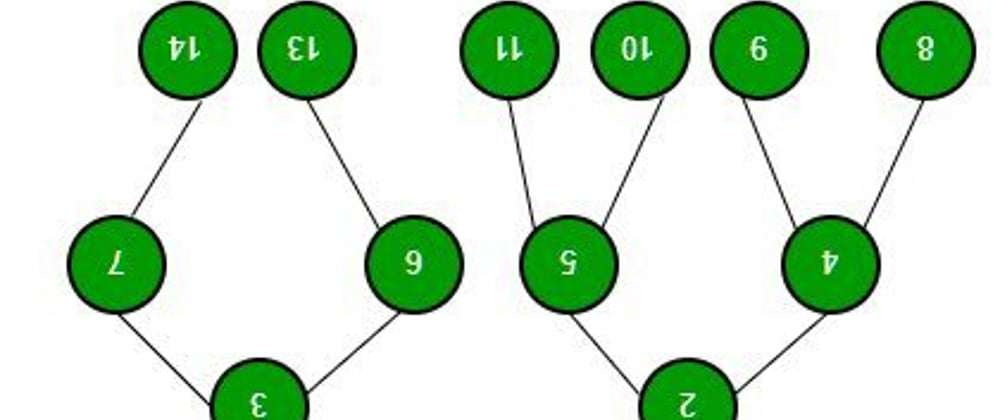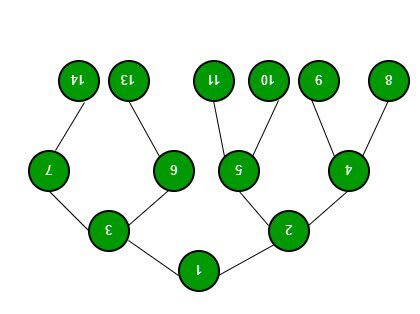Disclosure: This post includes affiliate links; I may receive compensation if you purchase products or services from the different links provided in this article.
Hello devs, I have been sharing a lot of resources about programming job interviews like the books, courses, and some interview questions on the software design and data structures like an array, string, and linked list.
So far, we have looked at only the linear data structures, like an array and linked list, but all information in the real world cannot be represented in a linear fashion, and that's where tree data structure helps.
A tree data structure is a hierarchical data structure that allows you to store hierarchical data like a family tree or office hierarchy. Depending on how you store data, there are different types of trees, such as a binary tree, where each node has, at most, two child nodes.
Along with its close cousin binary search tree, it's also one of the most popular tree data structures. Therefore, you will find a lot of questions based on them, such as how to traverse them, count nodes, find depth, and check if they are balanced or not.
A key point to solving binary tree questions is a strong knowledge of theory, like what is the size or depth of the binary tree, what is a leaf, and what is a node, as well as an understanding of the popular traversing algorithms, like pre-order, post-order, and in-order traversal.
If you are not familiar with these concepts then I strongly suggest you to first go through a comprehensive data structure and algorithm course likeData Structures and Algorithms: Deep Dive Using Java which explains essential data structure in detail. It's also very affordable as you can purchase this course on just $9.9 on crazy Udemy sales which happen every now and then.
Top 21 Binary Tree Based Coding Problems for Interviews
Now that you know how to solve binary tree-based coding problem using recursion and some tips about solving tree-based coding problems, here is a list of popular binary tree-based coding questions from software engineer or developer job interviews:
What is the difference between binary and binary search trees? (answer)
A Binary Tree is a basic structure with a simple rule that no parent must have more than 2 children whereas the Binary Search Tree is a variant of the binary tree following a particular order with which the nodes should be organized. In binary search tree, values of nodes on left sub tree are less than or equal to root and values of nods on right sub trees are greater than or equal to root.What is a self-balanced tree? (answer)
Self-Balancing Binary Search Trees are height-balanced binary search trees that automatically keeps height as small as possible when insertion or deletion happens. Hence, for self-balancing BSTs, the minimum height must always be log₂(n) rounded down. In other word, A tree is balanced if, for every node in the tree, the height of its right and left subtrees differs by at most 1What is the AVL Tree? (answer)
An AVL tree is a self-balancing binary search tree. It was the first such data structure to be invented. In an AVL tree, the heights of the two child subtrees of any node differ by at most one; if at any time they differ by more than one, rebalancing is done to restore this propertyHow do you perform an inorder traversal in a given binary tree? (solution)
How do you print all nodes of a given binary tree using inorder traversal without recursion? (solution)
How do you implement a postorder traversal algorithm? (solution)
How do you traverse a binary tree in postorder traversal without recursion? (solution)
How are all leaves of a binary search tree printed? (solution)
How do you count a number of leaf nodes in a given binary tree? (solution)
How do you perform a binary search in a given array? (solution)
How do you convert a given binary tree to double linked list in Java? (solution)
Write a program to find a depth of a given binary tree in Java? (solution)
How is a binary search tree implemented? (solution)
How do you perform preorder traversal in a given binary tree? (solution)
How do you traverse a given binary tree in preorder without recursion? (solution)
You have given a BST, where two nodes are swapped? How do you recover the original BST? (solution)
How do you convert a binary tree to a binary search tree in Java? (solution)
Find the largest BST subtree of a given binary tree in Java? (solution)
Write a Java program to connect nodes at the same level as a binary tree? (solution)
What is a Trie data structure? (answer)
A trie is an ordered data structure, a type of search tree used to store associative data structures. It is also referred to as a Radix tree or Prefix tree.What is the difference between the Binary tree and Trie?
Unlike a binary search tree, nodes in the trie do not store their associated key. Instead, a node's position in the trie defines the key with which it is associated. This distributes the value of each key across the data structure, and means that not every node necessarily has an associated value.
These are some of the most popular binary tree-based questions asked on Programming job interviews. You can solve them to become comfortable with tree-based problems.
If you feel that your understanding of binary tree coding is inadequate and you can't solve these questions on your own, I suggest you go back and pick a good data structure and algorithm courses like Easy to Advanced Data Structures by William Fiset, a former Google engineer, and former ACM-ICPC world finalist to refresh your knowledge about the binary tree and binary search tree.
If you need some more recommendations, here is my list of useful data structure algorithm books and courses to start with.
Now You're One step closer to the Coding Interview
These are some of the most common questions about binary tree data structure form coding interviews that help you to do really well in your interview.
I have also shared a lot of data structure questions on my blog, so if you are really interested, you can always go there and search for them.
These common coding, data structure, and algorithm questions are the ones you need to know to successfully interview with any company, big or small, for any level of programming job.
If you are looking for a programming or software development job in 2021, you can start your preparation with this list of coding questions.
This list provides good topics to prepare and also helps assess your preparation to find out your areas of strength and weakness.
Good knowledge of data structure and algorithms is important for success in coding interviews and that's where you should focus most of your attention.
Further Learning*
Here are some resources to level up your algorithms and coding skills for interviews:
Grokking the Coding Interview: Patterns for Coding Questions
Data Structures and Algorithms: Deep Dive Using Java
Data Structure and Algorithms Analysis --- Job Interview
Algorithms and Data Structure Part1 and 2
Data Structures in Java: An Interview Refresher
Grokking Dynamic Programming Patterns for Coding Interviews
Other Data Structure and Algorithms Resources you may like
- 75+ Coding Problems from Interviews (questions)
- 10 Free Courses to learn Data Structure and Algorithms (courses)
- 10 Books to Prepare Technical Programming/Coding Job Interviews (books)
- 10 Courses to Prepare for Programming Job Interviews (courses)
- 100+ Data Structure and Algorithms Interview Questions (questions)
- My favorite Free Algorithms and Data Structure Courses on FreeCodeCamp (courses)
- 30+ linked list interview questions with a solution (linked list)
- 30+ array-based interview questions for programmers (array)
- 40 Object Oriented Programming questions (tips)
- 5 Free Courses to learn Algorithms in-depth (courses)
- 10 Algorithms books every Programmer should read (books)
- Top 5 Data Structure and Algorithms Courses for Programmers (courses)
Closing Notes
Thanks, You made it to the end of the article ... Good luck with your programming interview! It's certainly not going to be easy, but by following this roadmap and guide, you are one step closer to becoming a Software Developer.
If you like this article, then please share it with your friends and colleagues, and don't forget to follow javinpaul on Twitter!
P.S. --- If you need some FREE resources, you can check out this list of free data structure and algorithm courses to start your preparation.









Top comments (0)